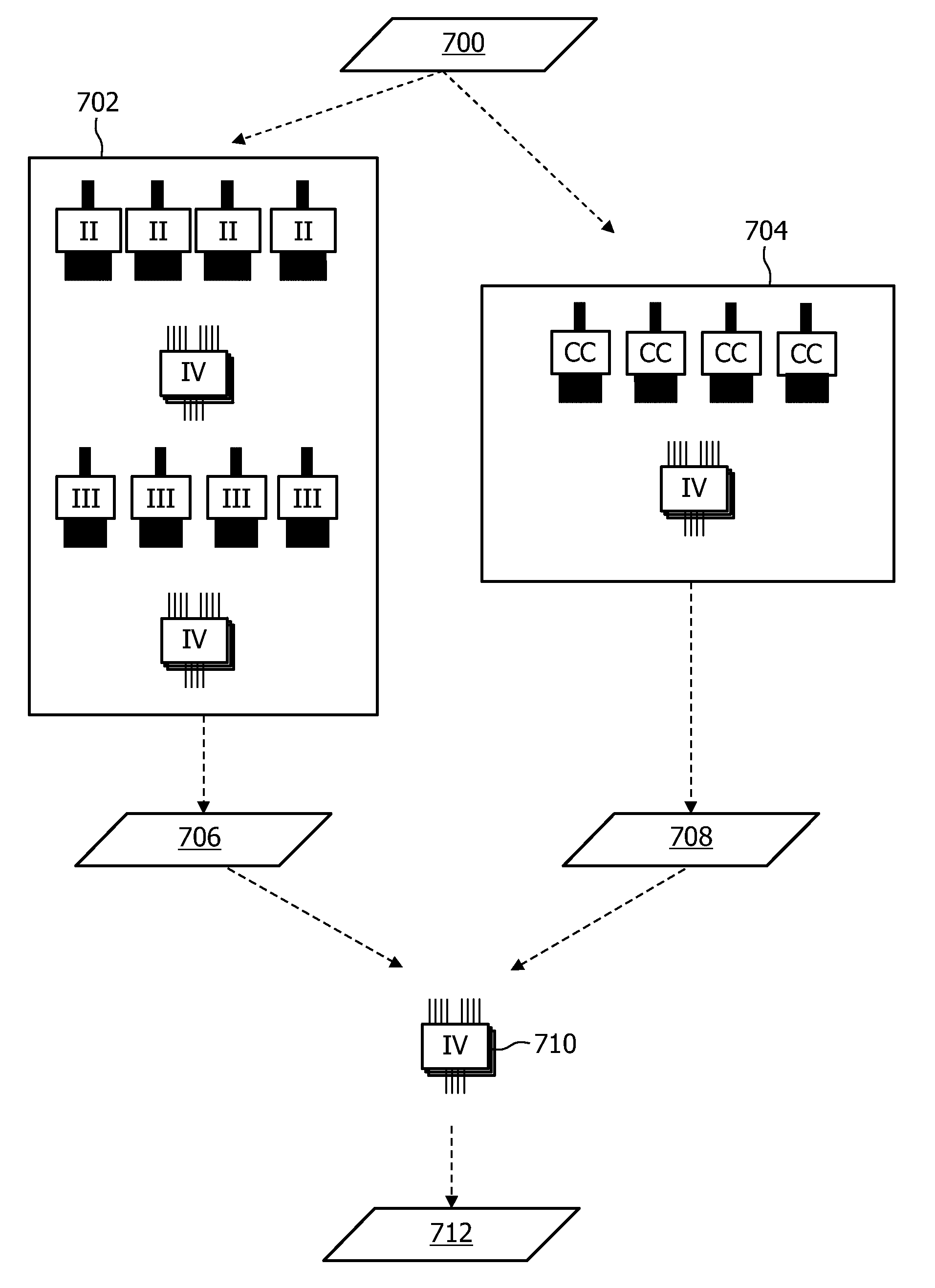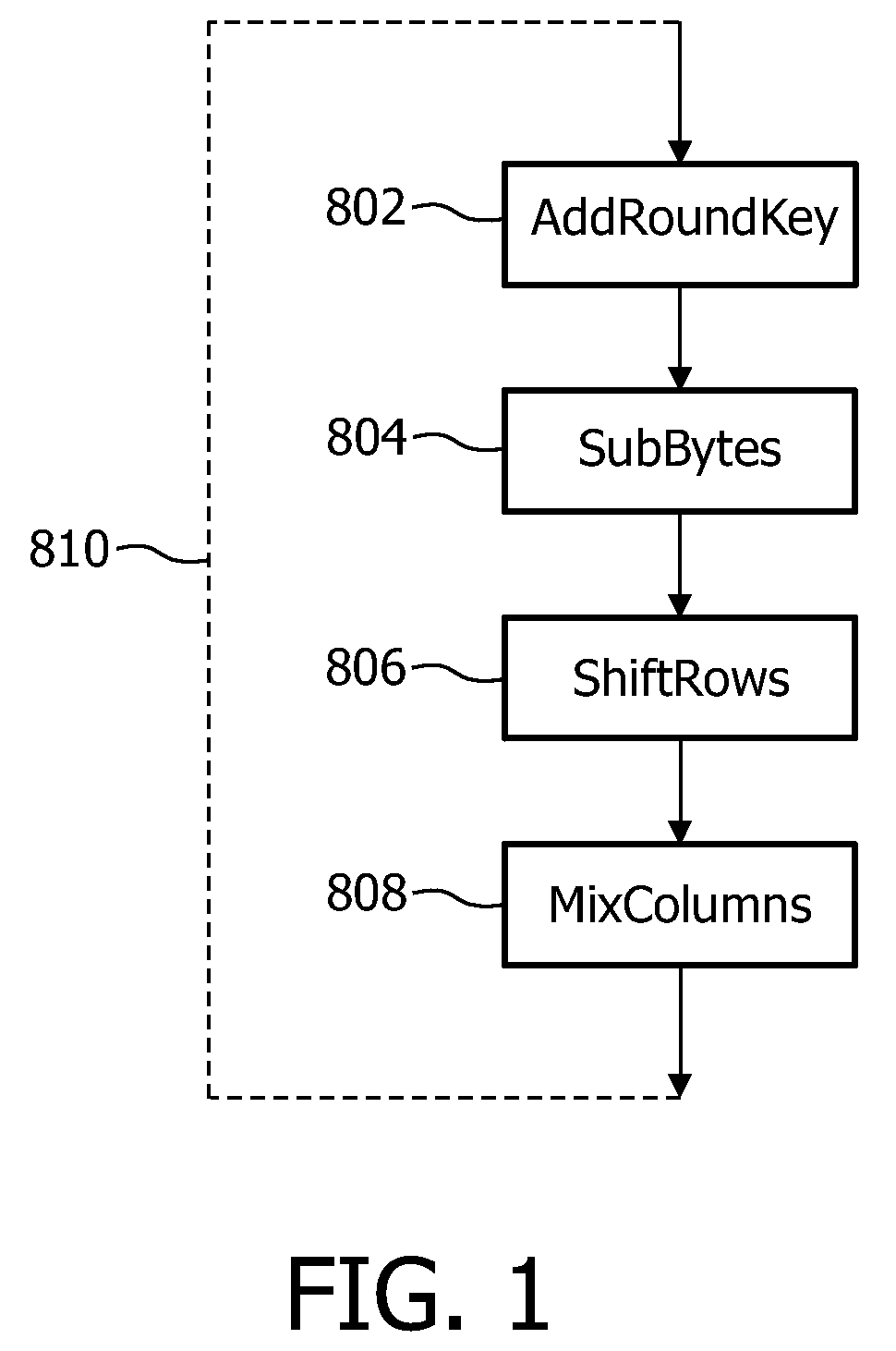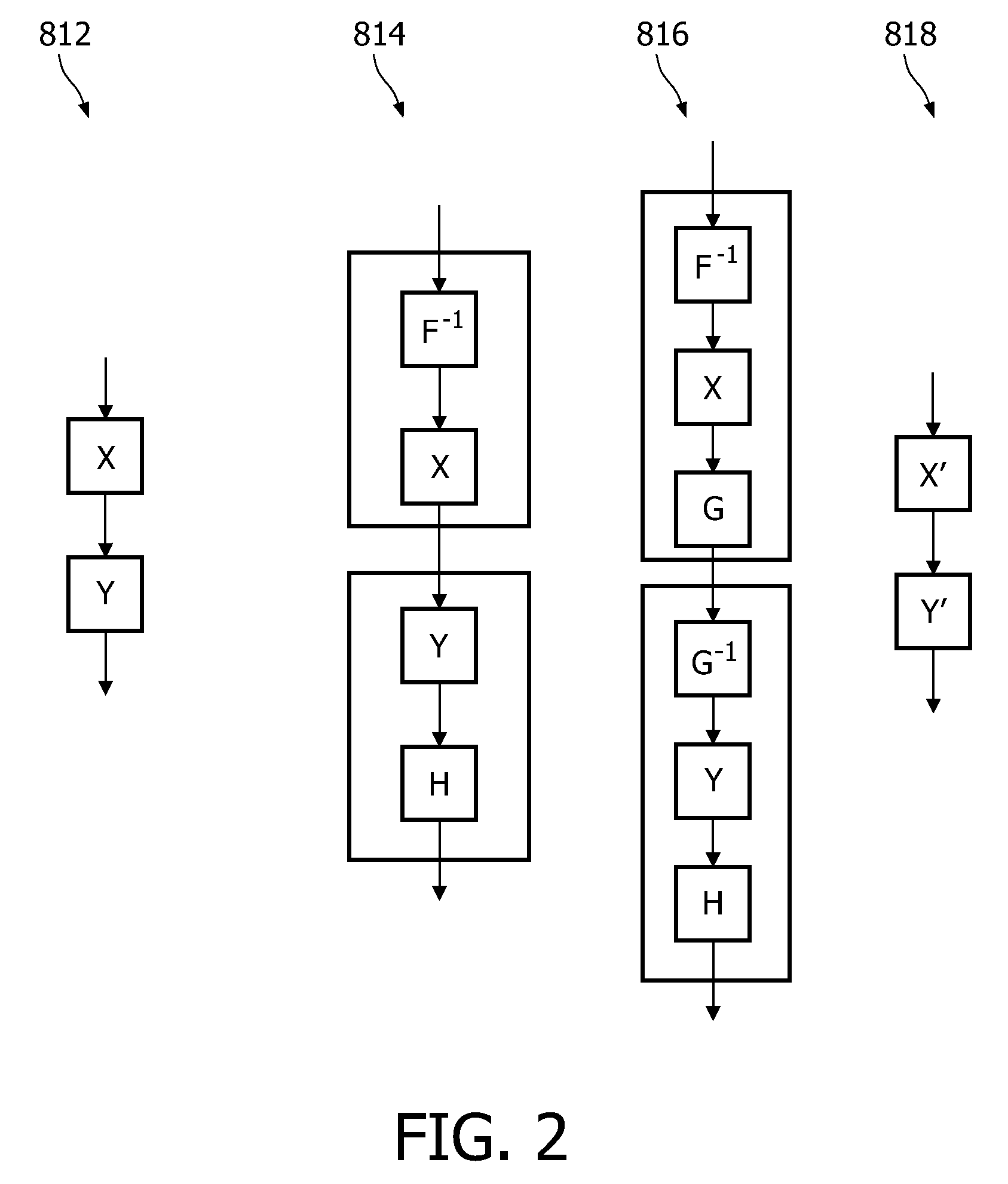Method and system for obfuscating a cryptographic function
a cryptographic function and function technology, applied in the field of protecting the integrity of the data processing system, can solve the problem that the system loses its ability to process data according to the data processing function
- Summary
- Abstract
- Description
- Claims
- Application Information
AI Technical Summary
Benefits of technology
Problems solved by technology
Method used
Image
Examples
Embodiment Construction
[0088]The approach of adding a veil of randomness and complexity in the control and the data path of the software application does not prevent the software from being subject to tampering, but only makes it more difficult to determine what changes would need to be made in order to achieve the tamperer's aim. General principles behind tamper-resistance can be outlined as follows. A program P can be represented as a composite of access control and / or permissions X and with functionality Y. An attacker may wish to tamper with the program such that the access control or permissions are removed without affecting the functionality. The tampered program could then be run without access controls or permissions at all, or at least run such that these controls are ignored. The invention will be explained mainly for the case that Y comprises a decryption functionality. However, it will be appreciated that the invention may be applied to any functionality Y including for example either encrypti...
PUM
 Login to View More
Login to View More Abstract
Description
Claims
Application Information
 Login to View More
Login to View More - R&D
- Intellectual Property
- Life Sciences
- Materials
- Tech Scout
- Unparalleled Data Quality
- Higher Quality Content
- 60% Fewer Hallucinations
Browse by: Latest US Patents, China's latest patents, Technical Efficacy Thesaurus, Application Domain, Technology Topic, Popular Technical Reports.
© 2025 PatSnap. All rights reserved.Legal|Privacy policy|Modern Slavery Act Transparency Statement|Sitemap|About US| Contact US: help@patsnap.com



